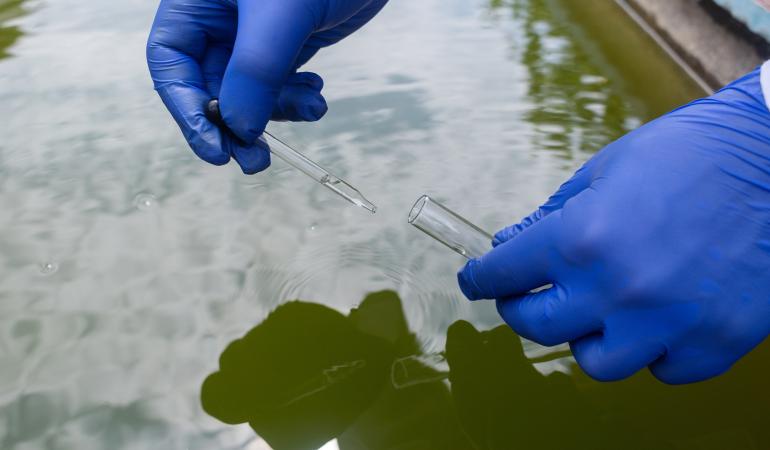
RIVM has, for the first time, investigated the possibility of detecting radioactive substances in sewage. This appears to be the case, as RIVM has found iodine-131 and lutetium-177. Hospitals use these substances in the treatment of patients. This study is a good example of a new way to measure radioactivity in the environment, and a new application of sewage water research.
Discharge of radioactive substances sometimes permitted
Under specific conditions, Dutch law allows entities to discharge radioactive substances into the public sewer. This primarily concerns hospitals with a nuclear medicine department. Through the patients, the used radionuclides end up in the toilet and, ultimately, in a waste water treatment plant (WWTP).
Radioactive substances measurable in sewage water
For the purpose of this study, RIVM was able to participate in the surveillance of coronavirus particles in sewage water. Eleven sewage water samples were analysed from five different WWTPs. At four of the WWTPs, hospitals are also connected. In this study, only the radionuclides lutetium-177 and iodine-131 were found in detectable quantities. These substances are used to treat prostate cancer and thyroid disorders, among others.
Added value of measuring radionuclides in sewage
This study does not yet provide an overview of all radionuclides that may be found in sewage. It was only conducted at a limited number of 5 locations. In addition, which radionuclides are still measurable in the water depends on the time between sampling and analysis.
It is nevertheless useful to analyse sewage water for radioactive substances, since the amount of radioactive substances in sewage can affect human and environmental health. Moreover, the radionuclides that are discharged into waste water, and their quantities, keep changing. This is partly due to developments in nuclear medicine.
There are many possibilities for further research on radionuclides in sewage water. To find out about the situation in the Netherlands, it is necessary to focus on the WWTPs where discharges of radionuclides can be expected. This kind of information helps detect unexpected discharges or radiation accidents.
Sewage water as an indicator of human and environmental health
Sewage water can serve as a measure of health in the Netherlands. Diseases that occur among groups of people are reflected in substances found in sewage water. Think of flu or COVID-19, for example. We can also find substances in sewage that tell us more about our lifestyle or living environment, such as drugs. This study shows that radioactive substances can also be detected in sewage water.
Every year, RIVM collects data on the quantities of radioactive substances that end up in our environment. Sewage research could offer a new, complementary way to map this out.